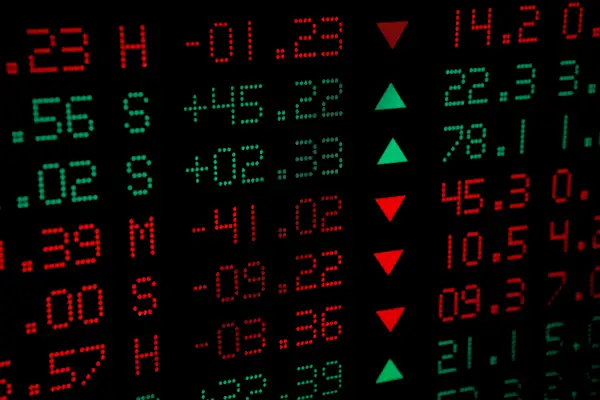A Stock Market Indicator That Predicted the 1987 Crash Is Flashing Red Again
Money is not a client of any investment adviser featured on this page. The information provided on this page is for educational purposes only and is not intended as investment advice. Money does not offer advisory services.

Amid a historic stock market rally, millions of Americans have been buying and trading stocks. But at least one key market indicator suggests the party may not last.
A widely followed gauge of what Wall Street calls “investor complacency” has been flashing a warning sign since early November. The CBOE equity put-call ratio measures the number of bearish to bullish stock market bets on the options market. The lower the number, the more optimistic investors are.
On Nov. 8, the ratio hit 0.36, one of the lowest readings since 1999. While fears triggered by the new COVID-19 Omicron variant led to an uptick this week, on Wednesday it was 0.52, still low by historical standards.
What may surprise you: Many experts actually regard extremely low readings as a warning sign, since they suggest excited investors may have bid stock prices above what's truly justified by corporate profits.
What’s more, right now the complacency gauge reflects a smoothness in the 2021 rally that’s not consistent with stock market history, says Oliver Pursche, vice president at financial advisory Wealthspire.
“We haven’t had a 10% market correction in quite some time, and those tend to occur once or twice a year,” says Pursche.
Speaking at a Bloomberg conference earlier in November, Goldman Sachs Group Chief Executive David Solomon said that greed had recently “outpaced” fear in the market, a complacency that he said often presaged painful periods.
How the put-call Ratio works
The CBOE equity put-call ratio is calculated by taking the overall number of cautious put options sold each day on the Chicago Board Options Exchange and dividing by the overall number of bullish call options sold. It was invented by a man named Martin Zweig, who cemented its reputation by using it to predict the 1987 crash.
A call option is a contract that allows the holder to buy a certain number of shares of stock if the price closes at or above a certain level, making it a bullish position because the contract gains value if the stock moves higher.
A put option is often considered “portfolio insurance” because it offers the right to sell a certain number of shares at a fixed price, even if the market price drops below that level, and so it gains value if a stock moves lower.
According to Zweig’s contrarian theory, imbalances in the volumes of the two speak to market sentiment. When put options vastly outnumber call options, there’s a panic afoot, and that’s a good time to buy stocks. When the demand for call options significantly outweighs demand for put options, as is the case currently, complacency reigns and that’s indicative of a speculative peak.
How accurate is the put-call ratio?
The long-term average of the CBOE equity put-call ratio is around 0.7. Contrarians start to get concerned when it dips below 0.5, which suggests twice as many bullish call options are trading as cautious put options. This typically only happens in very quiet and steady stock-market conditions.
“Stability breeds fragility,” as strategists at brokerage Bank of America Global Research put it, in an August research note.
The CBOE equity put-call ratio was one of the only warning signals ahead of the infamous Black Monday crash on October 19, 1987. Zweig, its inventor, was one of the few financial professionals to warn that a major selloff could be nigh.
It also sent some signals ahead of the 2008 financial crisis, hitting a multiyear low of 0.46 in October 2007, which turned out to be the month the bull market peaked.
There was a false alarm, a brief dip to 0.32, in 2010. The next time it got close to that low was January 2020, when it hit 0.44, just ahead of the Covid stock-market shock.
What a low put-call ratio means for the market
This time, there are plenty of other signs investors are extremely bullish — and that a correction could be around the corner.
In addition to options traders, who are typically professionals, Main Street investors have been pouring money into mutual funds and trading apps like Robinhood.
Meanwhile, the average stock in the S&P 500 is trading at a price nearly 40 times its average earnings over the past decade. It’s the highest level on record, except for the period just before the 2000 Dot-Com crash.
Pursche, of Wealthspire, said the sentiment imbalance may well point to a 10% correction but he didn’t believe the current bull market was close to expiry. The economic backdrop has not yet changed, despite speculation about the threat from the omicron variant of Covid 19.
“Sentiment matters greatly in the short term, fundamentals matter much more in the long term,” says. Pursche.
More from Money:
Robinhood for Beginners: A Complete Guide to Investing With the Controversial Stocks App